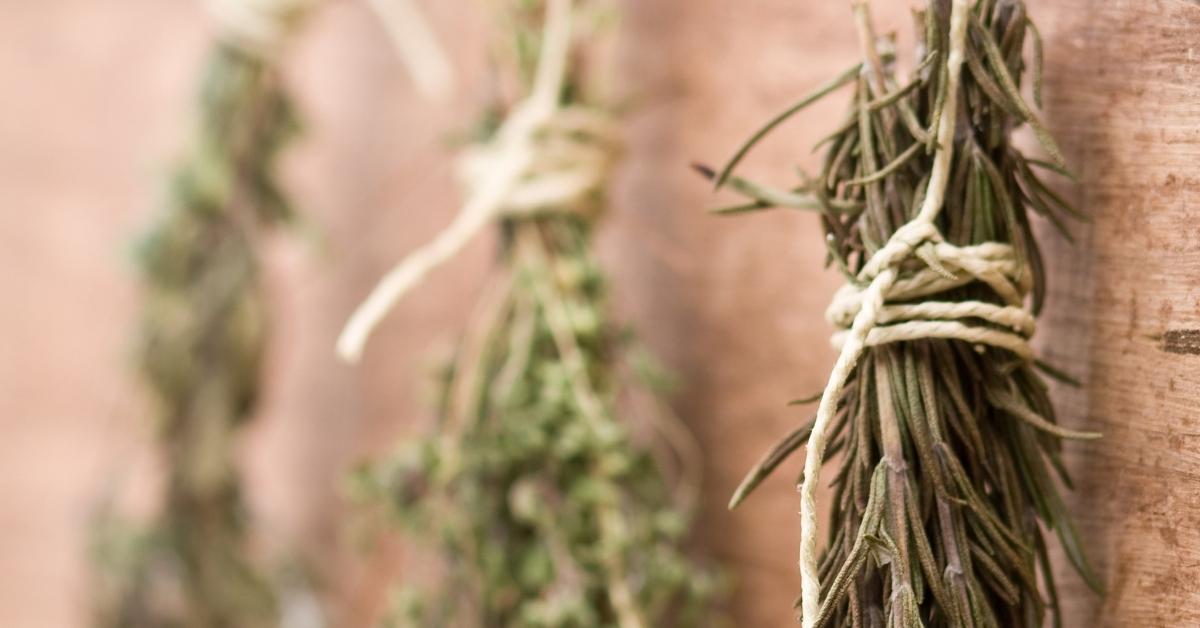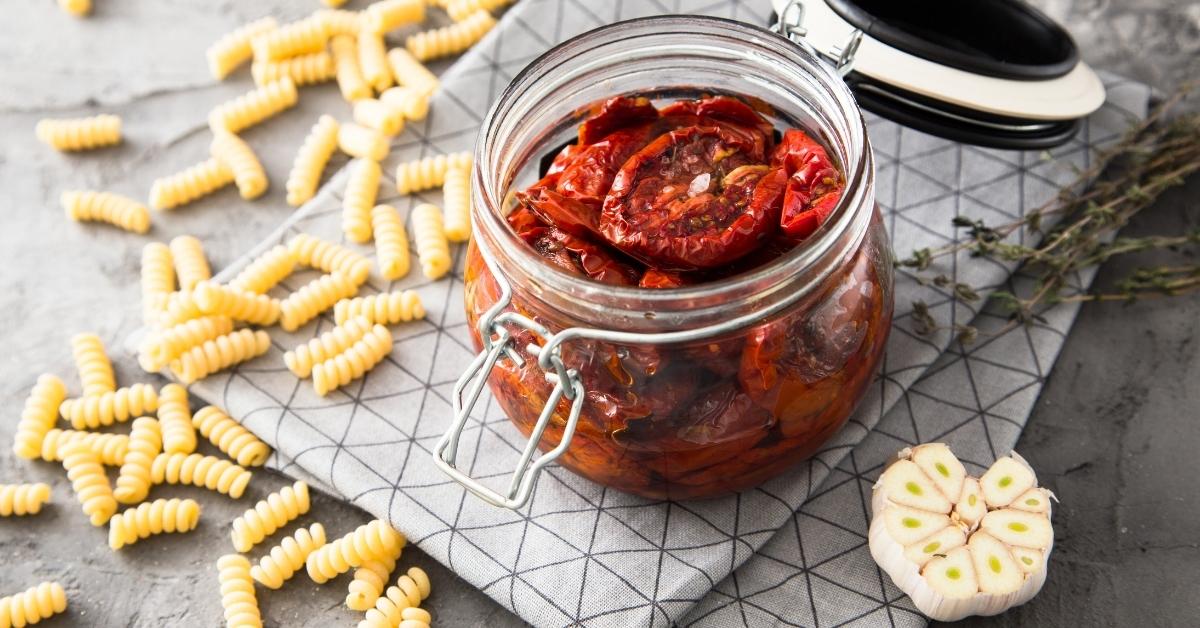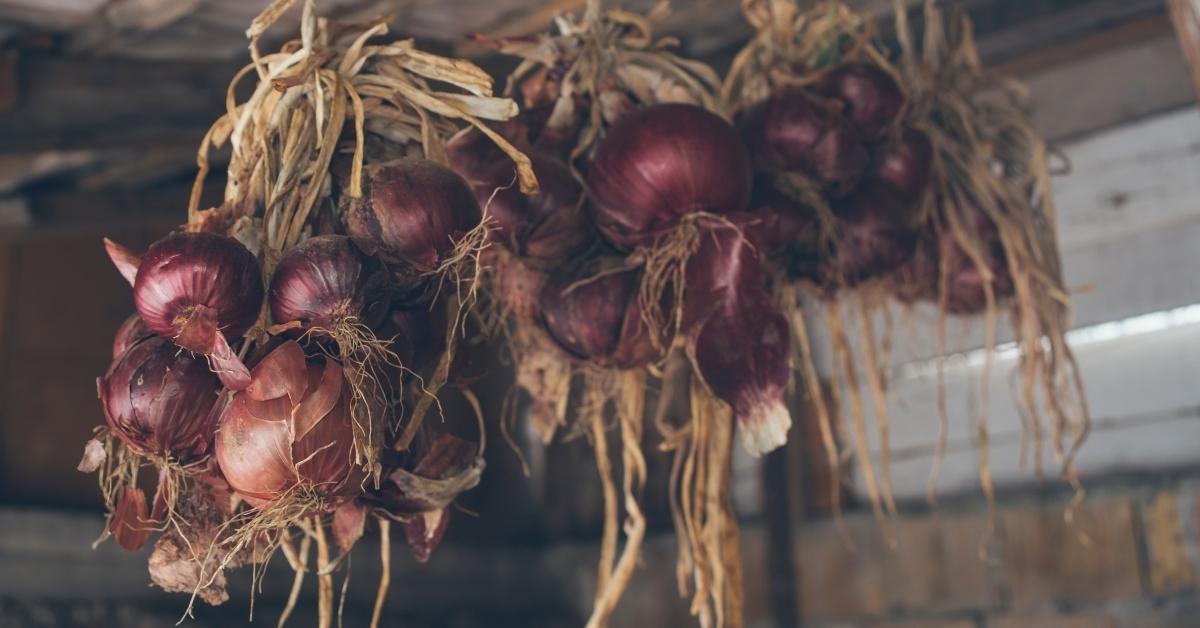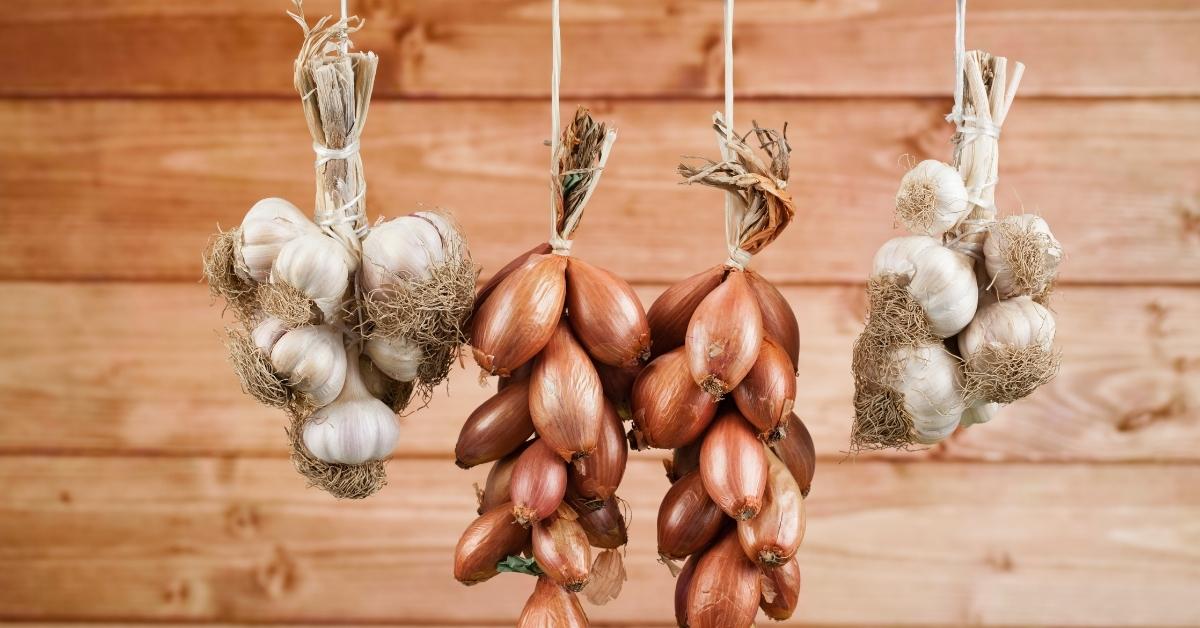Much of what we grow is best eaten fresh. Often, cherry tomatoes or sugar snap peas don’t even make it as far as the kitchen, and ripe sweetcorn cobs go straight from plant to barbeque. The end of the growing season is the perfect time to invite friends for seasonal feasts of veggie soups and light stews. But much as fresh is best, it’s also good to squirrel certain crops away, preserving them to enjoy over the winter months. Got a glut of garden produce this summer? Here’s what do to with it!
Which crops store well?
Herbs
Many fresh herbs, including basil, parsley and coriander, can be grown in pots on the windowsill for picking at any time of year. However, outdoor-grown herbs can be washed, chopped and frozen in ice cube trays with a couple of teaspoons of water. No need to defrost, just plop them into whatever you are cooking.
Herbs can also be dried – simply hang bunches out of direct sunlight until brittle and then crumble into clean jars.
Olive oil that has been infused with a few sprigs of herbs will add a wonderful flavour to roast potatoes and other vegetables.

Tomatoes
Come autumn, the greenhouse needs to be cleared to make space for tender plants. So, accept that those last few green tomatoes are just not going to ripen and turn them into chutney. Fried green tomatoes are good enough to have had a song written about them, so why not give them a try?
Tomatoes can also be dried in an oven or dehydrator, made into delicious pasta sauce which can be frozen or preserved in sterilised jars, or frozen whole for use in winter soups and stews.

Onions
Onion harvesting season is now underway, and you’ll know yours are ready when the foliage begins to yellow and flop, but before it dies down completely. Carefully lift them with a fork, taking care not to damage them, and spread them out in full sun or in a greenhouse or well-ventilated shed for a couple of weeks to dry. Make sure not to remove the base plate (where the roots attach), as this will reduce storing potential. To store, plait the leaves together and hang or just put them all in a net bag. Hang in a cool, dry place such as a shed or garage – not in complete darkness, as this will encourage sprouting – and use as required.

Potatoes
The most important thing when storing potatoes is to exclude light. Exposure to light will turn them green, and green potatoes are poisonous. So, store undamaged tubers in paper bags in total darkness, at a temperature of between 5 and 10°C.
Apples
Wrap the best quality fruits in paper and store or invest in a fruit press and enjoy juice and/or cider.

Squash and Pumpkins
Stored in a cool, dry place in a way that they don’t touch each other, these will keep for months – to Halloween and beyond!
Some General Tips
- Store only fully mature fruit and vegetables.
- Do not store any items that show signs of damage. To keep them perfect, take care not to bruise or scratch them when handling.
- Allow the vegetables to dry and brush off any excess soil. Don’t wash them until you are ready to use them.
- Keep the storage area cool, dry and dark.
- Every couple of weeks take a peek at your stored fruit and veg and discard any showing signs of rot.
Do you know any great ways to store surplus veg? Let us know in the comments below!

